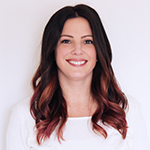SLP Category: Recognized by Apraxia Kids for Advanced Training and Expertise in Childhood Apraxia of Speech
No Records Found
Sorry, no records were found. Please adjust your search criteria and try again.
Google Map Not Loaded
Sorry, unable to load Google Maps API.
- Jena
- Lohrens-Becker
- Yes
- Building Abilities, LLC

My treatment from child-to-child will be very individualized (and FUN!); however, I will always include a strong emphasis on motor learning principles throughout my treatment and decision-making process (which is constantly evolving as the child’s motor speech system develops and changes). I am well trained and practiced in using multi-sensory cueing (tactile, visual, and auditory cues- including but not limited to PROMPT). I work closely and alongside occupational and physical therapists; thus, I am always treating the whole child and whatever means required to most optimally produce speech in and out of our treatment sessions (for example: use of sensory supports, swings, and/or gross motor movements to enhance verbal output). Use of functional vocabulary will aid in making treatment targets both attainable and meaningful to the child and his/her family. Additionally, I have a broad amount of experience assessing the need for and implementing both high and low tech augmentative and alternative means of communication (AAC) when necessary for the child.
My ultimate goal for each child is successful communication and I will work with each child and his/her family throughout the process to aid in constant growth and improvement across all communication needs. Parent and family education is one of the key components to my treatment. In order for a child to generalize and carry-over skills taught in therapy session to all other environments, especially the home, caregivers are continually educated, not only on techniques and speech targets used in the session, but also on the decision making and rationales behind the sessions’ context and objectives. With that being said, if not practical for the caregiver to be in the session or observing the session, follow-up (about what we did/what went well/what was difficult/and what to work on at home) will be conducted as needed, whether it is in written or verbal means.
I often use AAC in treatment. Whether it be low tech (PECS, picture schedule, or visual supports for verbal speech) to higher tech, voice-output AAC devices. Many children I currently treat who are diagnosed with CAS are also diagnosed with ASD and are using AAC (via applications on iPads). These children vary from nonverbal to highly verbal but limited intelligibility (in which cases AAC is used largely in social scenes to repair communication breakdowns). For some kids, AAC is even helpful as a bridge to help them confidently communicate wants and needs while we grow and strengthen their verbal communication skills.




